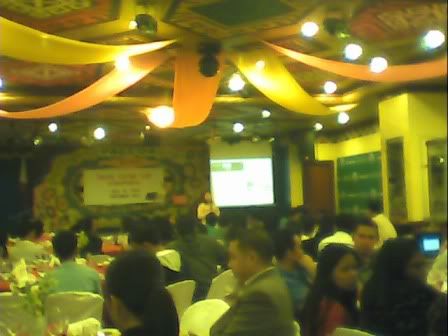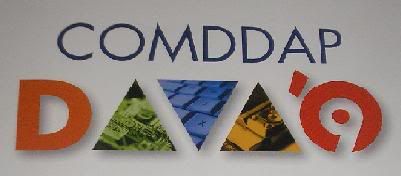Assignment 3
...Automated Election…..
Automated election system — a system using appropriate technology for voting and electronic devices to count votes and canvass/consolidate results.
The conduct of elections in the Philippines for the past four decades has remained largely unchanged. Philippine elections rely heavily on manual tallying and canvassing of votes thus making them vulnerable to control and manipulation by traditional politicians and those with vested interests. The cost of winning an elective post is highly expensive, and the absence of mechanisms to check and limit sources of campaign funds become fertile grounds for corruption and divisiveness.
In recent years, initiatives to reform the electoral system included the enactment of the following laws: Republic Act (RA) 8046, establishing a pilot program modernizing the registration and vote counting process in the Autonomous Region in Muslim Mindanao, the Party List Law, Fair Elections Act and the Absentee Voting Act. To address the inadequacies and limitations of the electoral process, RA 8436 or the Election Automation Act of 1997, was passed authorizing the Commission on Elections (COMELEC) to use automated election system for vote counting and canvassing in the national and local polls. The law provided for the generation of a national computerized voters list, establishment of a voters identification card system and the automation of the vote counting.
However, sectoral issues still hinder reform efforts in the electoral process. The following have been identified as basic problems afflicting the electoral system:
(a) outdated electoral process;
(b) failure to implement the electoral modernization law;
(c) limited administrative and
regulatory capabilities of the COMELEC;
(d) ineffective educational/information campaigns on new laws and policies;
(e) weak political party system;
(f) unaccountable political financing; and
(g) defective party list system (Governance Assessment, 2003).
...GOALS, STRATEGIES AND ACTION PLANS in Automated Election...
To ensure a credible and transparent electoral process, the modernization of the electoral system through computerization shall be supported to ensure the credibility of polls and correct the deficiencies in the electoral system. Likewise, the Omnibus Election Code shall be further revised and amended to respond to the needs of the present electoral system. Measures to strengthen the party system and regulate the activities of political parties shall be created. State financing of political parties shall also be considered through the passage of the Campaign Finance Bill.
The COMELEC’s capacity to raise the level of political discourse and educate citizens regarding their right to vote will be enhanced. This will be done through conduct of continuing citizen and voter education through partnership with civil society groups and other government institutions. The electorate must be empowered with information that would help them vote intelligently. The challenge is to develop the people’s appreciation of their vote as a means to reform the government and receive better services from it. Part of this challenge is the need to raise the awareness of the electorate on relevant issues and the corresponding platforms of the candidates, if the country is to shift from the politics of personality to the politics of party programs.
...How would it be?...
In partnership of Smartmatic Corp. and Filipino-owned Total Information Management Corp. (TIM) the automated election would be possible. With their partnership, the Smartmatic will be the one to provide machines for the automation, the one that has to guarantee the technology, the software, the transmission and the operations of the elections and indeed in charge of the operations.
Is it trustworthy to let this two company handle the operation in a critical event in our country like election?... The first thing to consider is “liability”. The trust and integrity of the provider and maker of the machines and operations to be used in the election proper are the top priority to ponder and contemplate. Starting from the planning, then processing and until implementing, and even the people include should make sure that they or it won’t be influence by any group of any party.
...In my own point of view….
Having an automated election in 2009 can make the Philippine election organize, manageable and faster, but of course the integrity which is the main concern of the election would still be on the hand of the Filipino people. Whatever the process or procedure to be used in an election or any event that is critical in a country, its central point is the people involve and the people to choose the right thing to do. To be on the duty of responsibility to take charge of the nonviolent, peaceful, harmonious, honest and fair election to all. In any event, whatever the purpose, the result would still depend on the intention and determination of each one to make the situation clear and accordingly. It would be a favorable condition for us in the election to be automated. However, there are lots of things to put into account such as process, security of data, the system, the accuracy, the management and a lot more are needed to consider in automated election. Since next year’s election will be automated it should be our duty, people of the Philippines to be vigilant, cautious and attentive in the election proper because the result of this election will greatly contribute to the country’s success and economic situation.
...Regarding to the issues of the election automation....
Since, election is a critical event in our country, it cannot be avoided to encounter negative issues and problem while undertaking the automation. In addition, for the protection of the Filipino people it is more relieving to thoroughly examine, check, study and evaluate things regarding automation for the benefits of everyone. It is the policy of the State to ensure free, orderly, honest, peaceful and credible elections, and assure the secrecy and sanctity of the ballot in order that the results of elections, plebiscites and other electoral exercises shall be fast, accurate and reflective of the genuine will of the people.



References:
http://www.chanrobles.com/republicactno8436.htm
http://www.neda.gov.ph/ads/mtpdp/mtpdp2004-2010/pdf/mtpdp%202004-2010%20neda_chapterx13_elections.pdf








